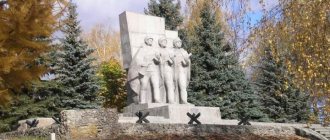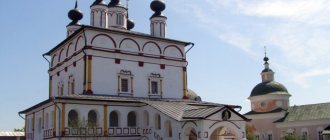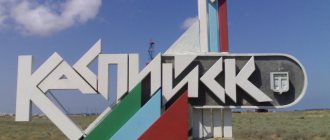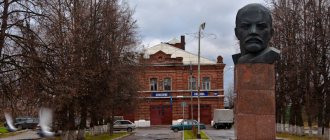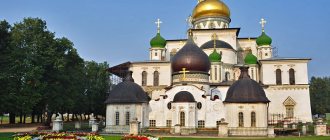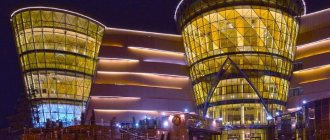Ney's story.
Neya is a small regional town in the Kostroma region of Russia. The city grew from a village formed around the railway station in 1906. With the construction of the station, active deforestation began in the Kostroma forests. As a result, large woodworking enterprises of Moscow industrialists and foreign investors began operating on its territory. By 26-29 years of the last century, the city had grown significantly and received the status of a workers' village, around which a district was formed, whose center was Neya. In 1958, Neya received city status. Today the population of Neya is about 9,000 people.
The construction of the city did not have a clear plan, so settlement occurred in a chaotic manner. The development of the area was influenced by marshy soil, so the city stretched along the railway for 8 kilometers.
Modern Neya
Today Neya is a small provincial town with a fairly developed industry. There are 14 industrial enterprises located in the city and its surroundings. The main direction is represented by forest processing, as well as bread and clothing production, flax processing, growing vegetable and livestock products.
Despite its modest size, the city has sufficient infrastructure; there are churches, a museum, a library, educational and preschool institutions, medical and administrative organizations.
Below we will give a detailed description of the main attractions of Ney that are worth visiting for city guests.
Since 1989, the Local History Museum has been operating in Neya, where you can get acquainted with the history of the creation and development of the city and its environs. See household items and crafts that the first settlers used. A separate exhibition of the museum is dedicated to the history of the development of astronautics.
Neya has several buildings made of wood at the beginning of the 20th century, which are considered architectural monuments. One of them is occupied by a cash settlement center. The backdrop of ancient carved houses will make a great memorable photo.
The fire tower, erected at the beginning of the last century, fits perfectly into the urban architecture of Ney.
In the central part of the city, a monument to Lenin and a memorial stele are traditionally installed, on which the names of the heroes who died in the Great Patriotic War are engraved. An eternal flame burns here, and local residents come to honor the memory of those killed in the war.
In 2007, one of the main attractions of Ney was consecrated - the new St. Spyridon Church.
Not me
- a city in the Kostroma region of the Russian Federation, the administrative center of the Neysky district. Population 10.7 thousand inhabitants (2010). The city is located on the right bank of the Neya River, 237 km from Kostroma. There are several options for the origin of the name of the city of Nei. The most reliable version seems to be the Meryan version, according to which “Neya” means “intertwined, winding river.” The name of the village comes from the name of the river.
The earliest mention of settlements on the territory of the Neya land dates back to 1502, when the Grand Duke of Moscow Vasily Ivanovich granted clerk Ivan Sadykov the Staro-Pokrovsky volost, the center of which was the Pokrovsky churchyard on the Neya River. The eastern part of the Neya region was crossed by the ancient Meryansky trade route, passing through the Unzha River, with. Soltanovo, Kotkishevo village, Parfenevo, Galich, connecting Siberia and Kazan with the center of Russia. This tract has been known since 1553.
In the first part of the 17th century, in one of the first geographical descriptions of Moscow State University in the “Book of the Big Drawing” it is said: “And the Neya River fell into the Unzha River from Galich.” Until 1778, these places were part of the Galich Principality, which united the territory on which in 1778, by Decree of Empress Catherine 2, 7 counties were formed, incl. Kologrivsky, which included the territory of the present Neysky district.
Photo from the TransPhoto community
The development of trade and production relations between the center of Russia and Siberia and the complicated foreign political situation in the Far East by the end of the 19th century raised the question of building a railway connecting the center with Siberia. The general direction of the road coincided with the ancient trade route. In 1903, construction began and by 1906 a section of the Vologda-Vyatka railway was built, and this is how the Neya stop appeared. The location for the station was chosen 2.5 km from the Neya River; this choice was dictated by topographical conditions and urban planning requirements. With the launch of the railway, excellent prospects opened up for entrepreneurs, since the road connected large forested areas with the capital and large port of St. Petersburg. In 1902, the Englishman Oscar Stevenya appeared in these places and, after assessing the situation, decided to build a wood processing plant. By the end of 1905, all construction and installation work was completed.
On September 20, 1926, the Neya stop in the Makaryevsky district of the Ivanovo-Voznesensk province was classified as a workers' settlement. The Neysky district as an administrative division was formed in 1929. “In April 1929, the Kostroma province was transformed into a district. The district included 14 districts. The Neysky district included the Kuzhbalsky district and a number of villages of the former Makaryevsky district of the Ivanovo-Voznesensk province.”
The center of the region was the village of Neya. The area of the district was 2.3 thousand square meters. km. It had a population of 27,160 people, including 19,590 rural people. With the formation of the Kostroma region, on August 13, 1944, the workers' village of Neya became part of it. In 1958, by Decree of the Presidium of the Supreme Soviet of the RSFSR, the working village of Neya was transformed into a city of regional subordination. The area is one of the forest areas of the region. In addition to forest wealth, the Neya region also has other natural resources. In the area there are peat bogs, deposits of oil shale, bituminous clay, and sulfur pyrites.
Modern Neya is more like a large village, since most of the houses are ordinary log houses. There are few high-rise buildings - 10-15 houses throughout the city. Previously, the city lived off wood processing plants. Now the factories have closed, the wood is no longer floated or processed, although deforestation continues, but the scale is no longer the same. The population does not live well, in principle, as elsewhere in small towns and villages of central Russia.
Around Neya there is a whole cluster of villages with sonorous Finno-Ugric names: Urzhum, Kokuevo, Mormysh, Kuzhbal, Zaingir, Totomitsa, Kotkishevo, Vozherovo, Balakhnya, Bolshaya Pasma, Nomzha, Polomka. The rivers flow: Nelsha, Lukhma, Kus, Ingir, Nomzha, Sendyuga, Nozma, Yakshish, Kaklash. All these Finno-Ugric names remind us of the recent times when the not yet Russified Merya and Mari, the ancestors of modern Neits, lived here.
Modern inhabitants of Neya
Temples of Ney
In the small area of Ney, spiritual life is developed. In addition to the new temple, there are ancient temples in the region:
- St. Nicholas Church in the village of Kotkishevo, dating back to the mid-18th century;
- Church of the Deposition of the Robe in the village of Vozherovskoye, dating back to the 18th century;
- Church of the Resurrection in the village of Vozherovskoye, dating back to the mid-18th century;
- Church of the Nativity of the Virgin Mary in the village of Kuzhbalskoye, from the second half of the 19th century;
- Church of the Assumption in the village of Yolkinskoye, from the 19th century;
- Church of the Epiphany and Church of the Intercession from the 18th-19th centuries.
Biography of French Marshal Michel Ney
As part of the Army of the Rhine, Ney's division in the campaign of 1799-1800, successfully fighting Austrian troops at Hohenlinden (now a city in Germany), captured about 10 thousand prisoners.
In 1802, Ney was the plenipotentiary ambassador of France to Switzerland, but a year later he was recalled - he took command of the 6th Corps, which was preparing for the invasion of England. In 1804, Michel Ney received the marshal's baton.
In the 1805 campaign against Austria, he defeated the army of Archduke Ferdinand of Habsburg at Günzburg (now a city in Germany), and on October 14, 1805, with a successful assault on the Elchingen bastions, he sealed the capitulation of the city of Ulm (now a city in Germany).
During the Russian-Prussian-French War (1806-1807), Ney's troops distinguished themselves in the Battle of Jena-Auerstedt in 1806 and the battles of Friedland (now the city of Pravdinsk in the Kaliningrad region of the Russian Federation) and Preussisch-Eylau (now the Russian city of Bagrationovsk) in 1807 .
From 1808, Michel Ney commanded the 6th Corps in Spain, where he suffered a number of defeats.
During the Patriotic War of 1812, Marshal Ney led the 3rd Corps, which participated in all major battles of the French army in Russia. In the Battle of Borodino, Ney's troops, being in the center of the battle formation of the French army, attacked the Semenov flushes and captured them at the cost of heavy losses.
During the French retreat, he commanded the rearguard, maintaining cheerfulness and composure. Near the village of Krasny in November 1812, Ney’s rearguard was completely destroyed.
Marshal Ney took part in the campaigns of 1813 and 1814. After the abdication of Napoleon I, he entered the service of the ruling Bourbon dynasty, was elected a peer of France and a member of the military council.
During the period of the “hundred days” (between the first and second restoration of Bourbon rule), Ney again went over to the side of Napoleon I. At the battle of Waterloo (now a settlement in Belgium), the marshal commanded the center of Napoleonic army.
After defeat in the battle, he returned to Paris, and at a meeting of the House of Peers he advised calling on the Bourbons again.
After the restoration of the Bourbon dynasty, Ney tried to hide in Switzerland, but was arrested on the southeastern border of France in August 1815. The Bourbons regarded Ney as the main culprit in their overthrow in March 1815 and brought him before a military court, which refused to admit its competence in the matter. The verdict of the marshal guilty of high treason was accepted by the House of Peers.
On December 7, 1815, Michel Ney was shot in the Luxembourg Gardens in Paris. A monument to him was erected at the site of his execution in 1853.
Marshal Ney was distinguished by his determination and courage, and enjoyed great popularity and respect from the soldiers, who called him “tireless,” “the bravest of the brave.” More than once, at critical moments of battle, Ney found himself in the most dangerous places, inspired the troops by personal example, and, under a hail of bullets, marched in the ranks of soldiers in a bayonet attack.
Michel Ney became a Legionnaire of the Legion of Honor in 1803 with the award of an honorary saber, and the highest officer of the Legion of Honor in 1804. And in 1805 he was awarded the then highest degree of the Order of the Legion of Honor - the Great Eagle badge. In 1806 Ney received the Grand Cross of the Portuguese Order of Christ. He was a Knight of the Italian Order of the Iron Crown (1807) and the French Order of Saint Louis (1814).
Michel Ney was married to Aglaya-Louise Ogier (1782-1854). He had four sons - Joseph-Napoleon (1803-1857), Michel-Louis-Felix (1804-1854), Eugene-Michel (1806-1845) and Edgar-Napoleon-Henri (1812-1882).
(Additional source: Military Encyclopedia. Chairman of the Main Editorial Commission S.B. Ivanov. Voenizdat, Moscow. In 8 volumes, 2004. ISBN 5 - 203 01875 - 
The material was prepared based on information from open sources
Results
Two rivers flow through the city - Neya and Nelsha. Therefore, for outdoor recreation, it is worth going fishing. However, it is worth remembering that the area adjacent to the river beds is swampy. Therefore, it is better to go fishing accompanied by local residents who know the area.
The provincial town may not seem remarkable at first glance. However, it is worth remembering that the main attraction of Ney is its nature. It was on this site, from an impenetrable forest, that the city grew.
A relaxing holiday in nature - that’s what awaits tourists in Neya!
Private advertisements in Neya, in the Kostroma region and in Russia
To add an advert
Kostroma
Novice specialist
Kostroma
Free premises, 500 m²
Kadyi
CLITORAL STIMULATOR-LIPSTICK – 9.3 CM. by Love monster
Kostroma
Piston rings
123ru.net
- minute-by-minute news with a daily archive. Only here we have all the main news of the day without political censorship. “123 News” - absolutely all points of view, sober analysis, civilized debates and discussions without mutual accusations and insults. If you don’t like it, don’t want to hear it, don’t read it, read it, be mutually polite and correct in your statements. Remember that not everyone's point of view coincides with yours. Respect the opinions of others, even if you defend your views and your position. 123ru.net is a news observer. We do not impose our vision on you, we give you a snapshot of the events of the day without censorship and without cuts. News as it is—online with minute-by-minute archives for all cities and regions of Russia, Ukraine, Belarus and Abkhazia. 123ru.net - live news live! A quick search from 123ru.net is not only the opportunity to be the first to know, but also the advantage of reporting breaking news instantly in any language in the world and being heard right away. You can add your news at any moment - here.
